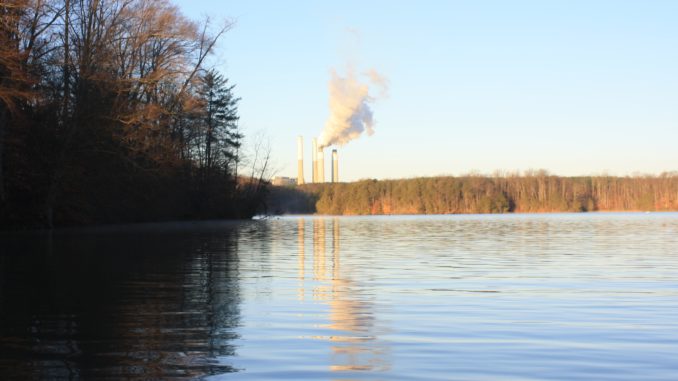
When Duke Power. created Belews Lake in 1973, fishermen had high expectations about the bass fishery, since new fisheries typically explode with large numbers of fish, though they may be small in size.
One year later, those expectations disappeared when selenium, a wastewater by-product of the Belews Creek Steam Station, leaked into the lake. The undetected spills occurred from 1974 through 1984, raising havoc with the fishery from mid-lake near the steam station to the dam, while leaving the southern portion of the lake largely uncontaminated.
In 1986, scientists discovered that selenium toxicity was the culprit. The selenium poisoning caused deformities to the spine, head, fins and eyes of fish; it also caused reproductive failure that decimated 19 of the 20 species in the lake.
Dennis Lemly, a U.S. Forest Service research biologist at the Southern Research Station, spent 20 years studying the effects of selenium on the Belews Lake fishery.
“Belews Lake represents one of the most-extensive and prolonged cases of selenium poisoning of freshwater fish in the United States,” Lemly was quoted as saying. “It provides an excellent case study of the insidious and persistent toxicity of selenium to aquatic ecosystems.
“Selenium poisoning in fish can be invisible for a time because the primary impact is on the egg, which receives the toxin from the mother’s diet. When the eggs are hatched, the developing fish metabolize the selenium. Some fish are visibly deformed, but others grow into adult fish that appear healthy yet fail to reproduce. Because there is no apparent fish kill, species can disappear before you can do anything about it.”
Once the effects of selenium became known, Duke Power rerouted the selenium-tainted wastewater from its steam station.
Though some selenium remains in the sediment, its impact has diminished.
“One indication of this is that the fish-consumption advisory on the lake has been removed for some 15 years,” said Kinnon Hodges, a fisheries biologist with the N.C. Wildlife Resources Commission.
Another indication relates to fish-density samplings conducted by Hodges.
“The densities of fish we collect during our electrofishing surveys in the main body of the lake and the upstream end of the lake are nearly identical,” he said. “If selenium was still having significant impact, you’d expect to see a lot higher density of fish in the upstream end of the lake than you would in the main body of the lake where the selenium contamination occurred.”
A 2007-2009 study by Hodges attributed the difference in bass growth rates from one end of the lake to the other to the warmer water temperatures of the northern section, though further study of the cooler southern portion is needed.
“The fish in the warm section exhibit faster growth rates during their first three years, but they don’t live very long,” he said. “That’s why there’s an abundance of 10- to 15-inch fish in Belews, but not many larger fish. That’s not an unexpected finding; it’s typical of heated lakes.”
Kinnon said Belews is a nutrient-poor lake, which accounts for its clear waters and its low productivity.
“The bass in Belews are long and lean, not pot-bellied like Lake Jordan bass, because of the lake’s limited food supply,” he said.



